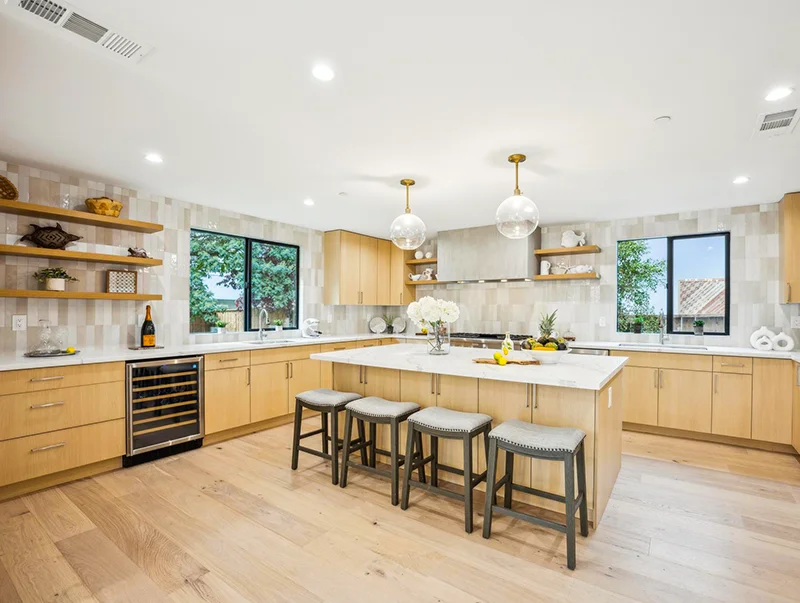California leads the nation in safety and sustainability standards, but navigating its building codes and permits can feel like decoding a foreign language—especially for first-time builders or out-of-state property managers. Global Arch Construction acts as your interpreter and guide, ensuring projects move smoothly from application to final sign-off.
1. The Regulatory Landscape at a Glance
- California Building Code (CBC): Anchored to the International Building Code, California adds stricter seismic and energy rules.
- Title 24 Energy Code: Mandates energy efficiency in lighting, HVAC, insulation, and more.
- CALGreen: The nation’s first mandatory green-building code, covering water, material conservation, and indoor air quality.
- Local Amendments: Counties and municipalities can add layers—historic-district guidelines, wildfire hardening zones, urban forestry requirements, or flood-zone restrictions.
Understanding how these overlap is the first step to avoiding permit rejections.
2. Permit Types You Might Encounter
- Building Permit: Structural changes, additions, or new construction
- Electrical Permit: Service upgrades, new wiring, solar installations
- Plumbing Permit: New lines, backflow devices, gas piping
- Mechanical Permit: HVAC replacements or ductwork
- Fire/Life-Safety Review: Sprinkler plans, alarms, egress paths
- Special Permits: Tree removals, encroachment, and grading
Residential remodels often combine building, plumbing, and electrical permits, while commercial projects might add accessibility and fire reviews.
3. Key Steps in the Permit Process
1. Pre-Application Research
Gather zoning information, setback requirements, and utility locations. A quick call to the planning department can reveal whether you need a variance or conditional-use permit.
2. Plan Development
Licensed professionals prepare detailed drawings—site plan, floorplans, elevations, structural calculations, and energy compliance forms.
3. Plan Check (Review)
City or county staff review the submission for code compliance. Typical cycles take two to four weeks, though smaller “over-the-counter” permits (like window replacements) can sometimes be approved in a single visit.
4. Revisions and Resubmittal
If reviewers request clarifications, prompt resubmittal keeps the clock moving. Errors—from missing structural details to illegible scans—cause the most common delays.
5. Permit Issuance
Upon approval, fees are paid, and the permit is issued. Work can officially begin.
6. Inspections
Inspections occur at milestones—foundation, framing, electrical rough-in, insulation, and final completion. The inspector signs off each stage before the next begins.
4. Common Pitfalls (and How We Prevent Them)
- Incomplete Applications: Missing documents or signatures trigger rejection. Global Arch uses a detailed checklist to verify every requirement.
- Unrealistic Timelines: Assuming plan review will take “a couple of days” can derail schedules. We build realistic timelines based on the jurisdiction’s workload.
- Ignoring Local Ordinances: A statewide code may allow something a city design guideline forbids. Our planners cross-check local amendments early.
- Unauthorized Field Changes: Swapping materials or layouts without a plan addendum can fail inspections. We obtain field change approvals before proceeding.
- Lack of Documentation for Inspections: Missing energy reports or truss certificates can halt final approval. Our superintendent maintains a jobsite binder with all required documents.
5. Special Considerations for Sacramento & NorCal
- Seismic Safety: Projects in higher seismic zones require engineered connections and shear walls.
- Wildfire-Urban Interface: Areas near forested land may need ignition-resistant materials and defensible-space clearances.
- Water Conservation: Drought ordinances influence landscaping and fixture choices.
- Cultural Heritage: Historic districts in Sacramento and San Francisco have design review boards and preservation rules.
With local experience, Global Arch respects these nuances, guiding clients through community hearings if needed.
6. Fast-Track and Over-the-Counter Options
Many jurisdictions offer expedited permits for small projects—like kitchen cabinet replacement or rooftop solar. Eligibility typically requires:
- No structural alterations
- Plans prepared by licensed pros
- Same-day plan-review appointments
We evaluate each project for fast-track potential, saving clients valuable time.
7. The Value of a Permit Consultant (Already Built into Global Arch)
Some firms charge extra for a “permit runner.” At Global Arch, permit management is integral. Our in-house specialists:
- Pre-screen drawings for code compliance
- Submit digital applications and pay fees on behalf of clients
- Monitor review portals and respond to plan-check comments
- Coordinate inspections with field supervisors and city staff
- Maintain transparent logs so owners can track progress 24/7
This full-service approach translates into fewer surprises, fewer re-submittals, and quicker project starts.
Conclusion
Permits and codes may seem daunting, but they exist to protect safety, sustainability, and property value. With Global Arch Construction as your guide, you gain a partner fluent in the language of California compliance. Planning a project? Contact us to streamline your permits and keep construction on schedule.




